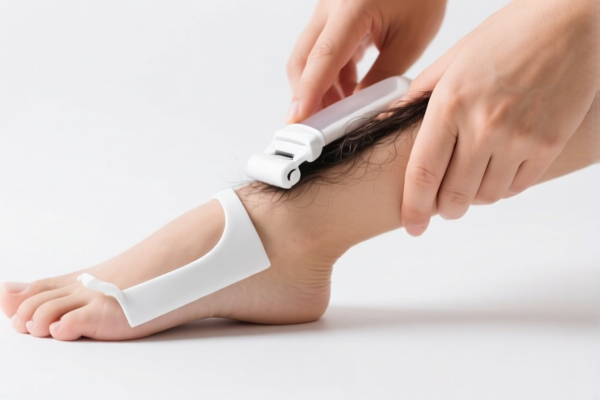| HS Code | Official Doc | Tariff Rate | Origin | Destination | Effective Date |
|---|---|---|---|---|---|
| 8203406000 | Doc | 58.3% | CN | US | 2025-05-12 |
| 8205598000 | Doc | 58.7% | CN | US | 2025-05-12 |
| 7315190000 | Doc | 80.0% | CN | US | 2025-05-12 |




Chain Remover
A chain remover is a tool used to break and rejoin the chains of bicycles, motorcycles, and other machinery employing roller chains. It is a specialized instrument essential for chain maintenance, repair, and replacement.
Material:
Chain removers are typically constructed from hardened steel alloy. This provides the necessary strength to withstand the forces involved in pushing chain pins in and out. Some models incorporate chrome vanadium steel for increased durability and resistance to corrosion. Handles are often made of steel, aluminum, or plastic for a comfortable grip.
Purpose:
The primary purpose of a chain remover is to facilitate the removal and installation of chain pins, enabling the following:
- Chain Breaking: Removing links to shorten a chain to the correct length, typically after replacing worn components or adjusting gearing.
- Chain Installation: Rejoining broken chains or installing new chains.
- Master Link Removal/Installation: Specifically designed to work with master links (also called quick links), which are commonly used for easy chain removal and installation.
- Pin Extraction: Removing stubborn or damaged chain pins.
Function:
Chain removers operate on a simple mechanical principle. They consist of two main parts:
- Pin Pusher: A hardened steel pin that is driven through the chain to push the chain pin partially out of the link.
- Chain Holder: A cradle or clamp that securely holds the chain in place while the pin is being pushed.
The tool is positioned on the chain link, the pin pusher is aligned with the chain pin, and force is applied (usually by turning a handle or using a wrench) to drive the pin out. Reinstallation reverses this process.
Usage Scenarios:
- Bicycle Maintenance: Regularly shortening or lengthening chains during gear adjustments or replacing worn chains.
- Motorcycle Repair: Replacing chains, sprockets, and performing drivetrain maintenance.
- Small Engine Repair: Used on chains of chainsaws, scooters, and other small engines.
- Heavy Machinery: Some larger chain removers are designed for industrial chains on construction equipment and agricultural machinery.
Common Types:
- Riveting Type: These are the most common type for bicycle chains. They push the chain pin out, requiring the pin to be re-inserted and riveted (peened) to secure the chain.
- Press Type: Used primarily for chains with pre-stressed pins, commonly found on some motorcycle chains. These tools press the pin fully out and back in.
- Master Link Pliers: Specifically designed for installing and removing master links. They grip the master link plates and compress them together to allow for easy removal or installation.
- Universal Chain Removers: These tools are designed to work with a variety of chain sizes and types, often including both riveting and press-fit capabilities.
- Chain Breaker Sets: These kits often include multiple tools, such as a chain remover, chain tool, master link pliers, and chain wear indicators.
Chain removers fall under the category of tools used for manipulating chain, and therefore require consideration of relevant HS codes pertaining to chain and related tools.
Here are the HS codes applicable to chain removers, based on the provided reference material:
-
7315190000: Chain and parts thereof, of iron or steel; Articulated link chain and parts thereof; Parts. This HS code covers parts of articulated link chain, which could include components used in a chain remover designed for such chains. The basic duty is 0.0%, with an additional duty of 25.0%, increasing to 30% after April 2, 2025, for steel and aluminum products.
-
8203406000: Files, rasps, pliers (including cutting pliers), pincers, tweezers, metal cutting shears, pipe cutters, bolt cutters, perforating punches and similar handtools, and base metal parts thereof; Pipe cutters, bolt cutters, perforating punches and similar tools, and parts thereof; Other (including parts). If the chain remover is classified as a handtool similar to pliers or cutting tools, this HS code may be applicable. The basic duty is 3.3%, with an additional duty of 25.0%, increasing to 30% after April 2, 2025.
-
8205598000: Handtools (including glass cutters) not elsewhere specified or included; blow torches and similar self-contained torches; vises, clamps and the like, other than accessories for and parts of machine tools or water-jet cutting machines; anvils; portable forges; hand- or pedal-operated grinding wheels with frameworks; base metal parts thereof; Other handtools (including glass cutters) and parts thereof; Other. If the chain remover doesn’t fit neatly into other handtool categories, it may be classified as an “other handtool”. The basic duty is 3.7%, with an additional duty of 25.0%, increasing to 30% after April 2, 2025.
According to the provided reference material, the HS code options related to 'chain remover' are limited, with only the following 3 found.
It is important to note that the final HS code classification will depend on the specific design and function of the chain remover. If the chain remover is primarily used for manipulating chain, HS code 7315190000 should be considered. If it is a general-purpose handtool, HS codes 8203406000 or 8205598000 may be more appropriate.
Customer Reviews
No reviews yet.